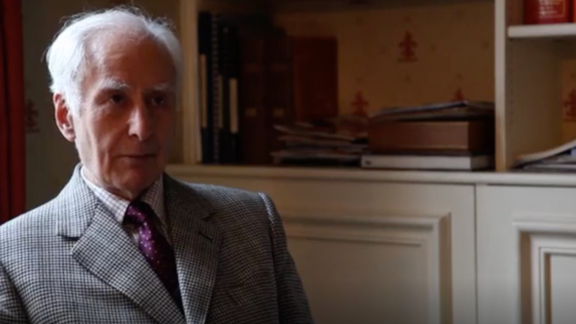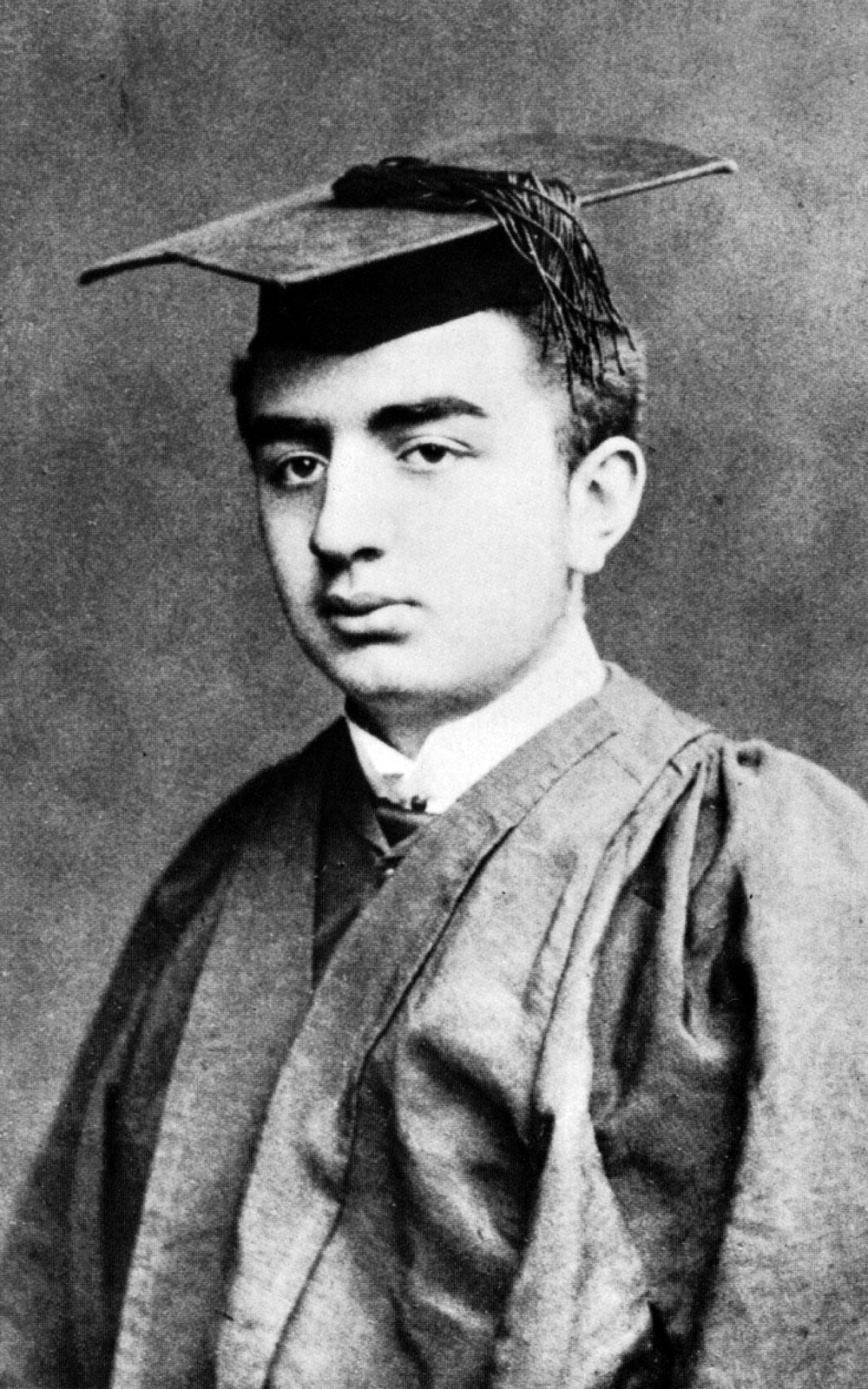
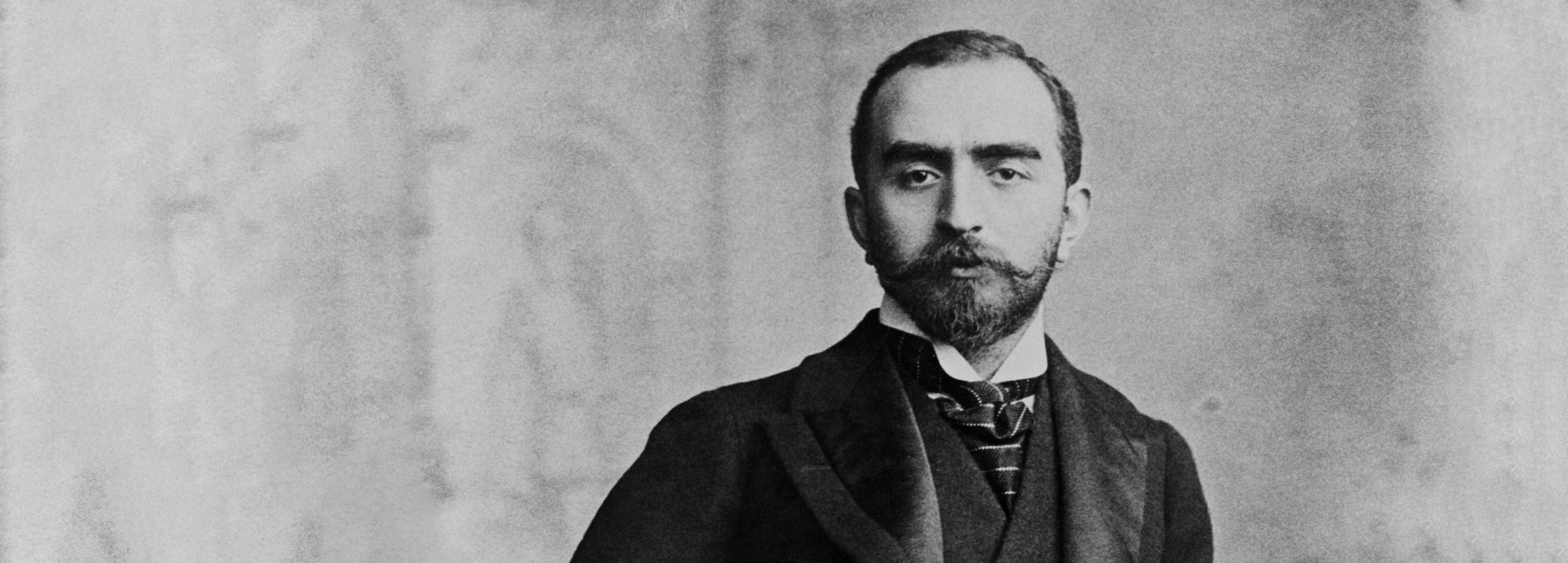
Calouste Sarkis Gulbenkian
1869 – 1955
Calouste Sarkis Gulbenkian
Calouste Sarkis Gulbenkian
Calouste Sarkis Gulbenkian (1869-1955) was a business man, art collector and philanthropist of Armenian origin, born in the Ottoman Empire.
Bringing Eastern and Western cultures together, Gulbenkian was above all a “business architect”. Due to his vision, his contacts and persuasive skills, Gulbenkian played a decisive role in the first half of the twentieth century mediating international negotiations that led to the exploitation of the exceptionally rich oil fields in Al-Jazeera (Iraq). Throughout his life, he assembled an eclectic and unique collection that was influenced by his travels and his personal taste.
Gulbenkian took British citizenship in 1902 and died in 1955, in Lisbon, where he spent his last years and established in his will an international foundation that would bear his name and act so as to benefit the whole of humanity.
Background and education
Calouste Gulbenkian was born in Scutari (now Üsküdar), Istanbul on 23 March 1869, the son of Sarkis and Dirouhi Gulbenkian. The Gulbenkians were proud of their illustrious family’s centuries-old connection to the region south of Lake Van, traditionally viewed as the cradle of Armenian civilisation.
By 1800 the Gulbenkians had settled in Talas near Caesarea (today’s Kayseri), where they generously funded the construction of Armenian schools and a new Armenian church. These are the earliest recorded examples of a long tradition of Armenian philanthropy which continued into the twentieth century.
Calouste’s father and uncle moved to what was then Constantinople around 1850, and soon added the city’s S. Pirgiç hospital to the family’s philanthropies. An 1881 trade directory lists “S. and S. Gulbenkian” as both an import/export house and a bank. Along with carpets, wool and other commodities the company traded in kerosene from the Caucasus. By 1892 S. and S. Gulbenkian formed one of a network of family-based trading partnerships based in London, Marseilles, Varna (Bulgaria) and in other cities across the Ottoman Empire..

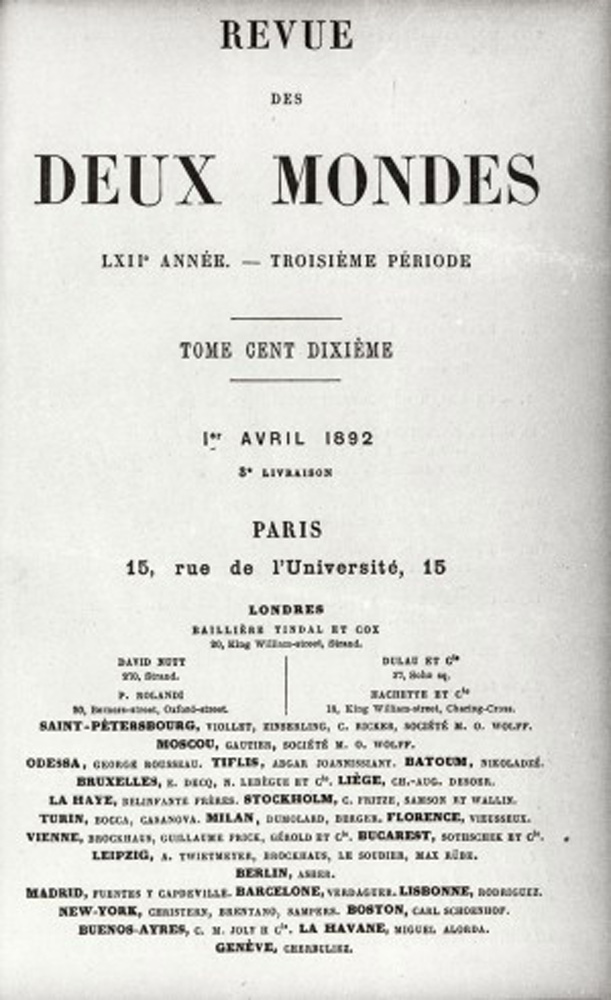
Calouste Sarkis Gulbenkian started his studies in Kadikoy (Calcedonia), at the Aramyan-Uncuyan school. At the age of 14 he was sent to study in Marseille, where he perfected his French, and then to London, where he attended King’s College School. He soon moved on to King’s College London’s Department of Applied Sciences, where he studied a range of subjects, excelling in Physics. He became an Associate of King’s College in 1887. Although he considered doing further research in Paris, he was dissuaded by his father.
In 1888 Calouste Gulbenkian travelled to Baku to learn more about the oil business and to complete his education. This journey led him to write a travelogue entitled “La Transcaucasie et la Péninsule d’Apchéron – Souvenirs de Voyage” as well as articles for La Revue des Deux Mondes and other French periodicals.
These publications established his reputation as an oil expert, capturing the attention of the Ottoman Ministry of the Civil List, who asked Gulbenkian to draw up a report on the oil-rich lands which the Sultan had acquired in Al Jazeera (modern-day Iraq).
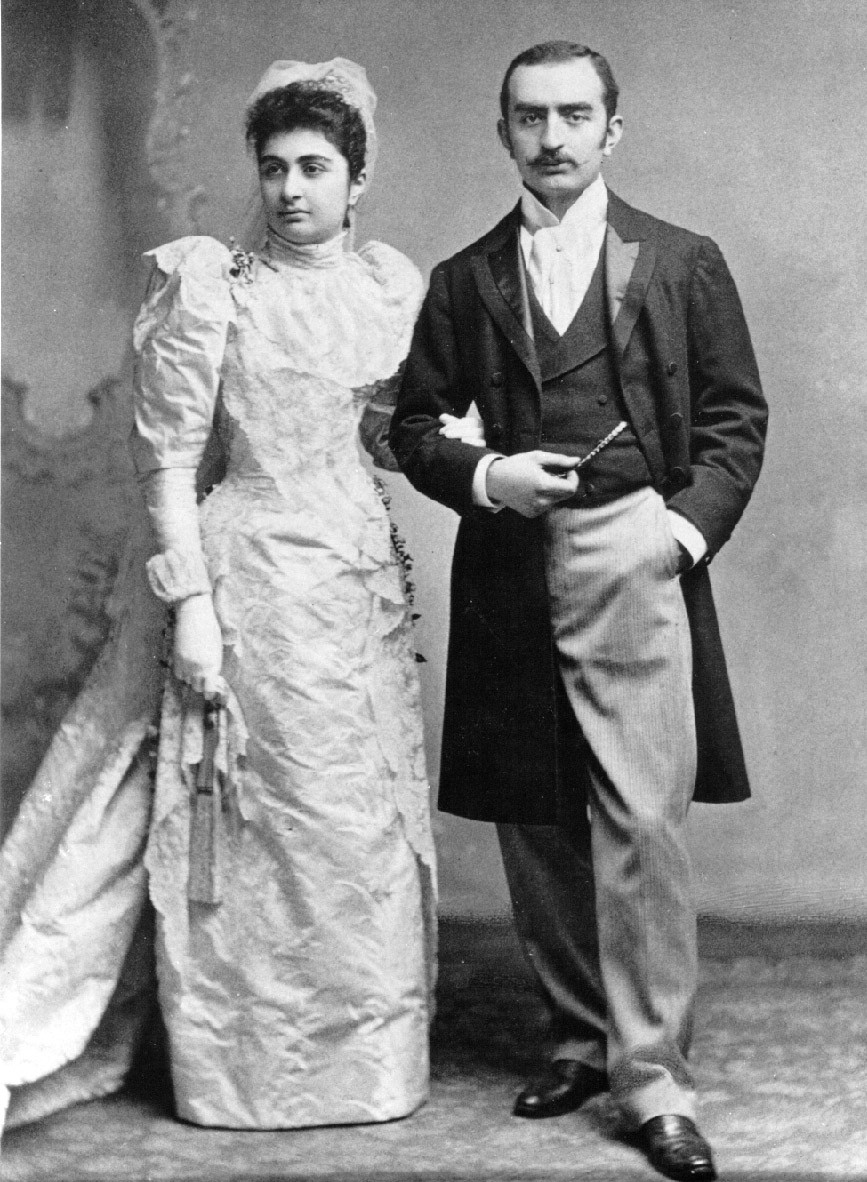
In 1892 Gulbenkian married Nevarte Essayan in London. The couple had two children: a son, Nubar (born 1896), and a daughter, Rita (born 1900). The Essayans originally hailed from Caesarea and had privileged access to the Ottoman court. But the good connections with the Ottoman court were not enough to protect Gulbenkian and his family from anti-Armenian pogroms. In 1896 the storming of the Imperial Ottoman Bank office in Constantinople by Armenian activists triggered a wave of coordinated attacks aimed at the city’s Armenian community. Fortunately for Gulbenkian, his wife’s family included a ferry line among their business interests and the family was able to escape by steamship to Alexandria.
Gulbenkian’s interests in finance soon brought him back to London and its stock exchange, then the world’s largest, where he was caught up in the boom in South African and Australian mining shares. Gulbenkian quickly gained an in-depth knowledge of corporate finance. As much a financier as an “oil man” (a label he rejected), Gulbenkian invested widely and well. Meanwhile in 1901 he pulled out of several family trading partnerships, including S. & S. Gulbenkian, leaving his two brothers and uncle to continue without him.
Gulbenkian may not have been the first to foresee the importance of the Al Jazeera’s (i.e. Iraq’s) oil reserves, but he had the vision, the contacts and the persuasive skills to mediate between international investors and the Ottoman government. In particular he sought to convince both of the benefits of exploiting such reserves in a rational manner, through international collaboration rather than price wars.
Business Architect
In the early 1900s Gulbenkian had struggled to persuade several Caucasus-based oil magnates of the benefits of entering into joint ventures with Rothschild Frères, Deutsche Bank and Royal Dutch.
After Royal Dutch’s alliance with Shell this combine expanded aggressively, buying up oil companies in the United States, Mexico, Venezuela and Rumania as well as the Caucasus. Gulbenkian negotiated many of these deals. The 1 or 2% commissions he secured as payment proved very lucrative as oil shifted from simply being a source of kerosene (used for lighting) to a source of gasoline, fuel oil, waxes, lubricants and chemicals like toluol (used for making TNT).
Although Gulbenkian’s relationship with the Anglo-Dutch combine Royal Dutch-Shell was remarkably close in the 1910s and 1920s’s, otherwise he was careful to guard his independence and privacy. A true internationalist, he was able to view diplomatic and economic questions from a number of perspectives simultaneously.
GULBENKIAN PRESENT HIMSELF AS AN HONEST BROKER WITHOUT PREJUDICES AND WITHOUT TIES TO ANY ONE EMPIRE, NATION-STATE OR COMPANY.
He turned what might have been a disadvantage – being an immigrant from a very different culture – into an advantage, bringing East and West together. He always saw himself as a “business architect” who had the vision, balanced competing interests, and designed structures, rather than as an oilman.
Born an Armenian subject of the Ottoman Sultan, Gulbenkian took British citizenship in 1902, and retained it for the rest of his life. This did not, however, prevent him from serving both the Ottoman and Persian Empires in a diplomatic character. Gulbenkian was appointed financial advisor to the Ottoman legations in both Paris and London in 1909 and 1910. In 1919 he was appointed to a similar position advising the Persian (later Iranian) embassy in London. Having spent thirty years based in London, after 1918 Gulbenkian spent most of his time in Paris.
Mr. Five Percent
For decades the western European powers and in particular France had exploited their position as holders of Ottoman debt to impose their will on the so-called “Sick Man of Europe”.
All of these European powers had their eyes on parts of the Ottoman Empire, and many had already appropriated large chunks of territory for themselves. Gulbenkian’s role in founding the National Bank of Turkey, following the Young Turk Revolution (1908), was to establish a truly international source of financing for the Ottoman Empire’s modernisation, including the development of its oil reserves and other natural resources.
In 1912 the National Bank of Turkey set up the Turkish Petroleum Company (TPC) to exploit the exceptionally rich oil fields in Al-Jazeera (Iraq). Royal Dutch-Shell held a 25% stake in the company, the National Bank of Turkey 35% and Deutsche Bank a further 25%. The remaining 15% belonged to Calouste Gulbenkian.
In early 1914 the Turkish Petroleum Company was reorganised. Royal Dutch-Shell’s great rival, the Anglo-Persian Oil Company (now BP) had a rival claim to the Al-Jazeera oil concession, and, more importantly, strong support from the British Foreign Office. In order to accommodate Anglo-Persian Gulbenkian agreed to reduce his share from 15% to 5%. A few months later World War I broke out, however, and TPC was left in a state of suspended animation.
World War I brought the final dissolution of the Ottoman Empire, and led to Deutsche Bank’s 25% of TPC being transferred to a French company specially created for the purpose, the Compagnie Française des Pétroles (CFP, now Total). The French had been slow to realize the strategic importance of oil, and Gulbenkian continued to coach the French authorities as well as CFP on how to handle their rivals. Meanwhile the oil-rich lands of Al-Jazeera ended up within the new British mandate of Iraq, from whom the TPC secured a concession in 1925.
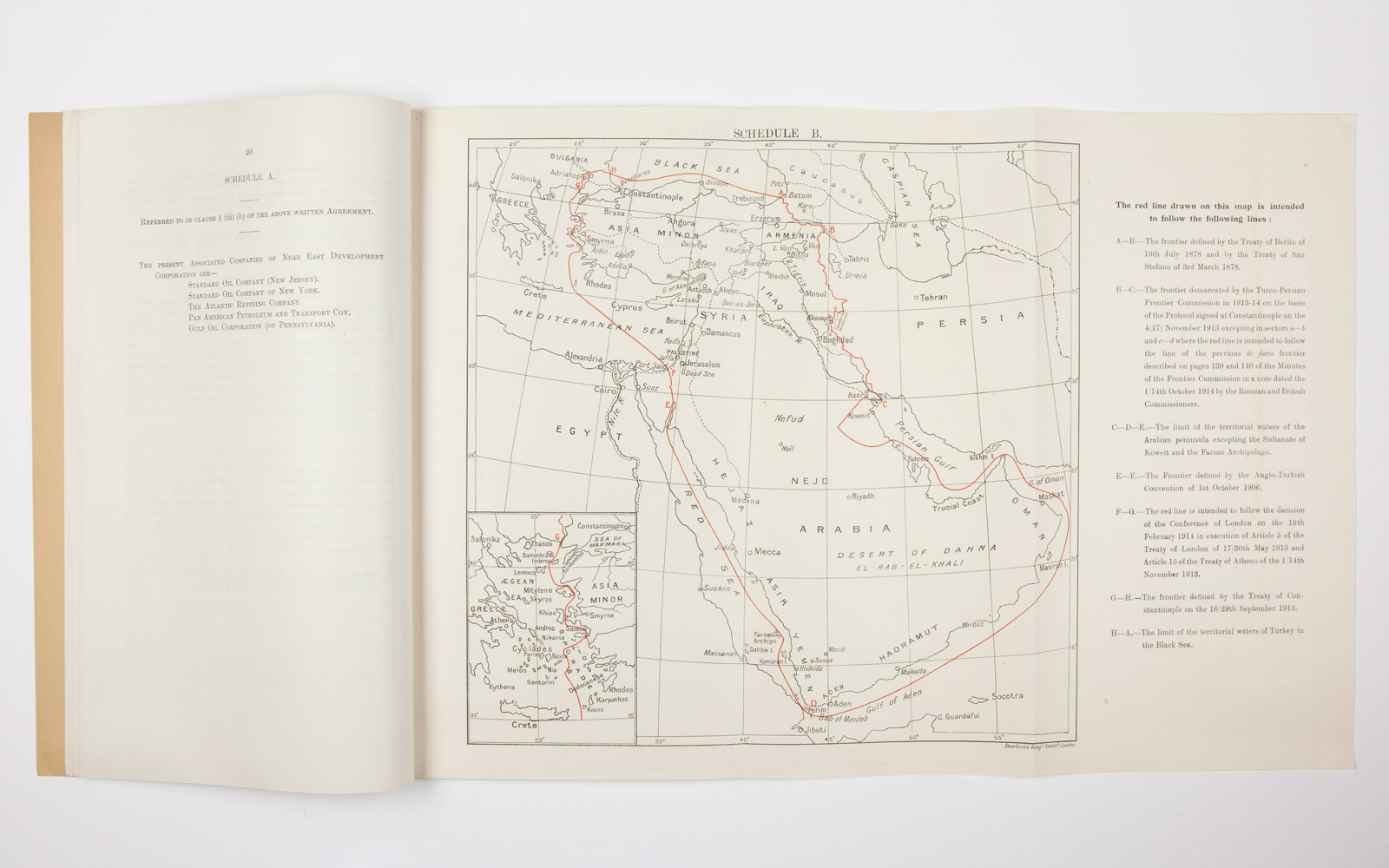
Motivated partly by respect for national self-determination and partly by self-interest, the United States was determined to draw a line under the quasi-imperial pre-1914 system by which the Middle East had been divided up by Britain, France, Russia and other powers into “spheres of interest.” Each power sought to keep foreign companies out of “their” sphere. Gulbenkian again played a decisive role in the negotiations which led to an American consortium joining TPC under the so-called “Red Line Agreement” of 1928. The famous line marked the borders of the former Ottoman Empire; the signatories to the agreement agreed not to operate within the red line area other than through their joint venture, TPC. Calouste Gulbenkian had ensured that the great powers would act together in an ordered manner, and had managed to preserve his 5% shareholding. Although he continued to seek new international partnerships, notably between France, Persia and the Soviet Union, the “Red Line” was his greatest achievement.
His persistence, business talent, and flexibility to accommodate new interests and adapt to new situations earned him considerable respect among industry insiders. Titans of the oil industry all recognized Gulbenkian’s probity and straight-dealing.
THE REST OF THE WORLD KNEW HIM SIMPLY AS MR. FIVE PERCENT, ONE OF THE WORLD’S RICHEST MEN.
Collector and Philanthropist
His collection now totals over 6,000 pieces from all over the world, dating from antiquity until the early twentieth century.
Calouste Gulbenkian revealed his passion for art at an early age. This reflected his origins in Cappadocia–a major crossroads of religions and art–and Constantinople–another crossroads of civilizations and the capital of the Romans, Greeks, and Ottoman Turks. Throughout his life, he assembled an eclectic and unique collection that was influenced by his travels and his personal taste, and sometimes involved lengthy and complex negotiations with the leading experts and specialist dealers. His collection now totals over 6,000 pieces from all over the world, dating from antiquity until the early twentieth century (including examples from ancient Egypt, ancient Greece, Babylonia, Armenia, Persia, Europe, and Japan).
GULBENKIAN DERIVED CONSIDERABLE PLEASURE FROM HIS COLLECTION, WHICH HE REFERRED TO AS HIS “CHILDREN”.
Calouste Gulbenkian’s collection of paintings includes works by Bouts, Van de Weyden, Lochner, Cima de Conegliano, Carpaccio, Rubens, Van Dyck, Hals, Rembrandt, Guardi, Gainsborough, Romney, Lawrence, Fragonard, Corot, Renoir, Nattier, Boucher, Manet, Degas and Monet. A favourite sculpture was Houdon’s famous Diana, which had belonged to Catherine of Russia and which Gulbenkian purchased from the Hermitage Museum in 1930.
Fiercely protective of his “children”‘s welfare, Gulbenkian could also be extraordinarily generous in lending and donating works from his collection to public museums around the world. In 1936, his collection of Egyptian antiquities was entrusted to the care of the British Museum, while the finest paintings went on loan to the National Gallery. Later, in 1948 and 1950, the same works would be sent on to the National Gallery of Art in Washington.
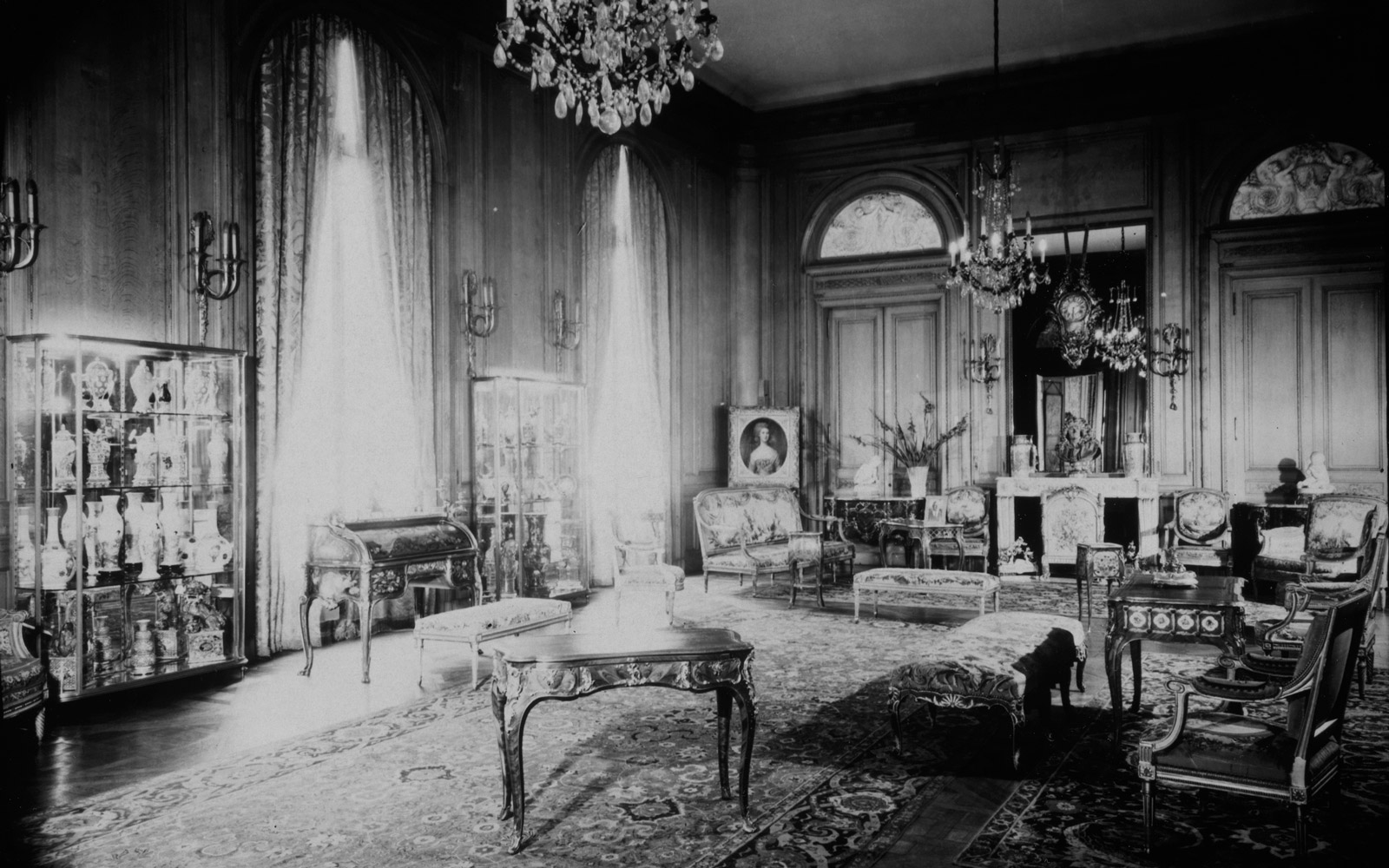
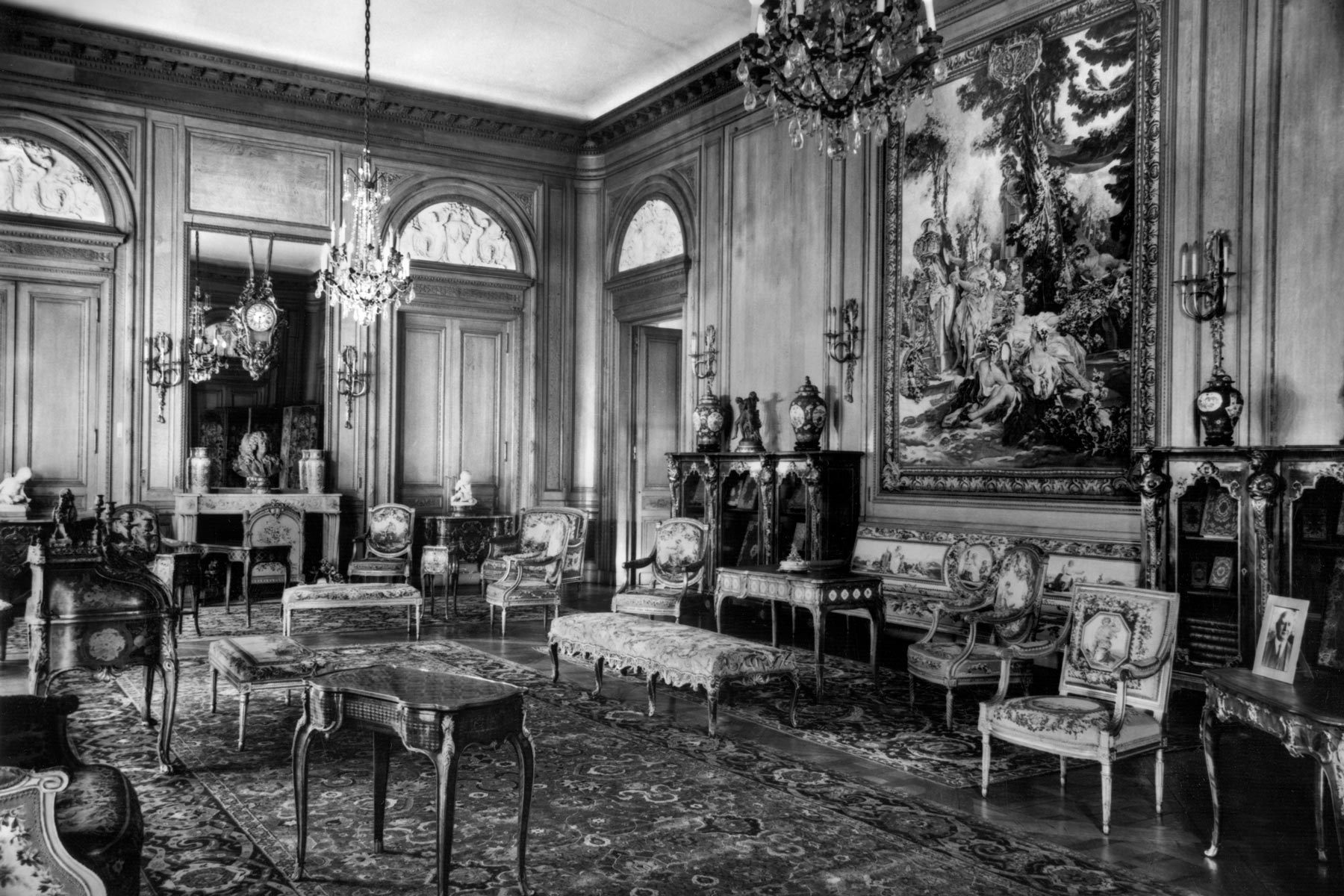
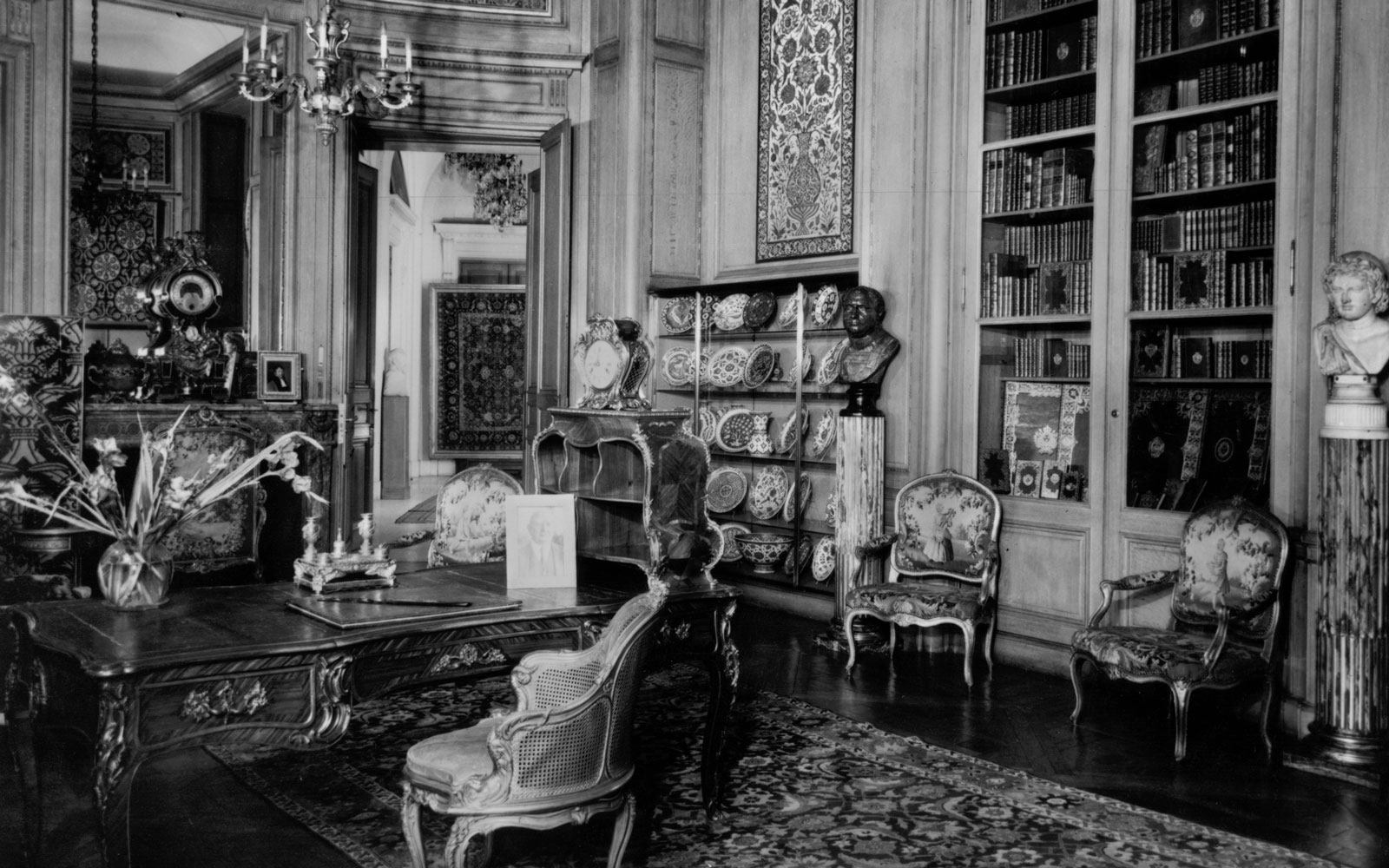
![Hall e escada da moradia no n.º 51 da Avenue d’Iéna, Paris [Estátua de Diana, Jean-Antoine Houdon (1741-1828)]](https://cdn.gulbenkian.pt/wp-content/uploads/2021/04/F04-03024_Av-DIena_1600.jpg)

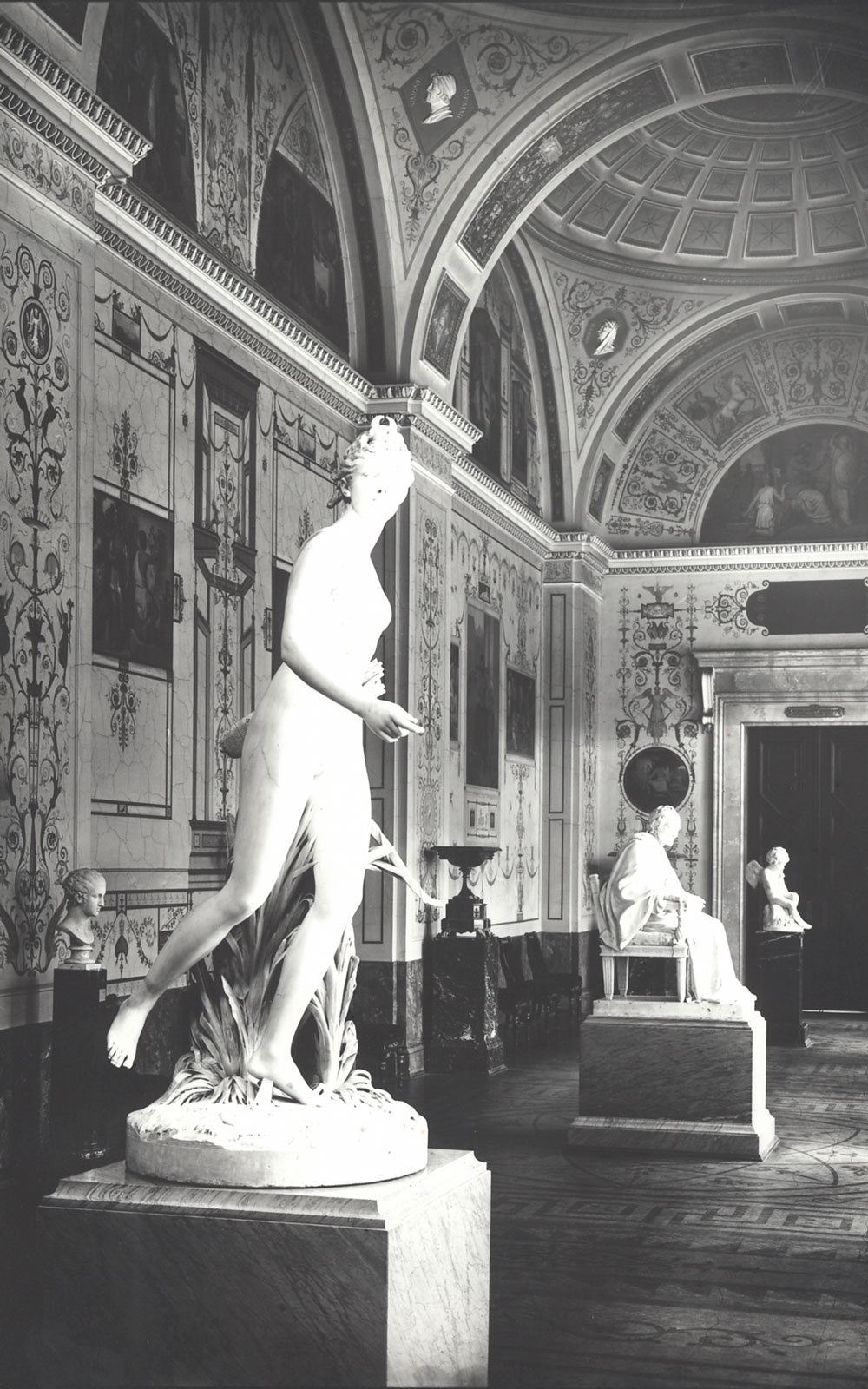
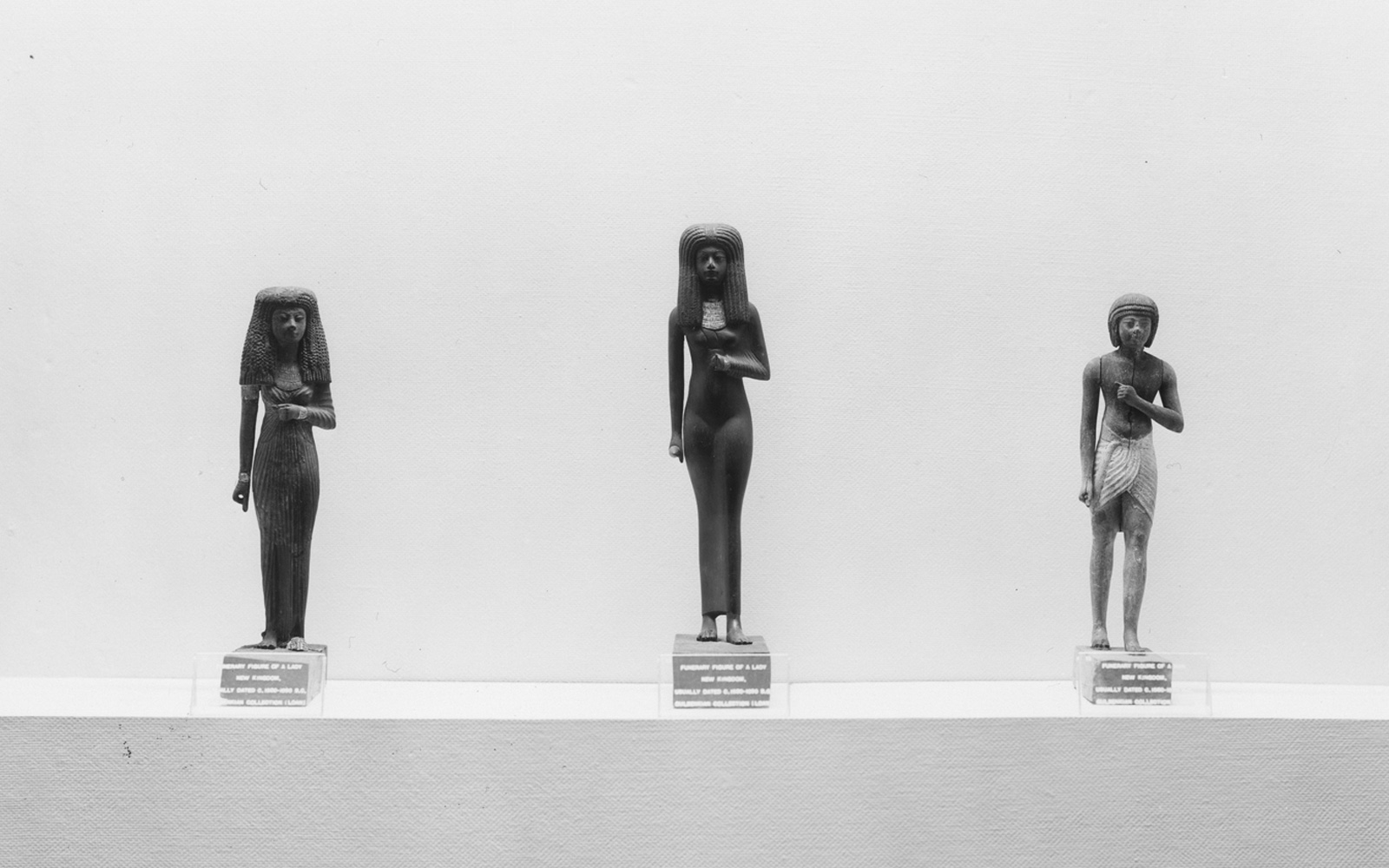
As his collection expanded and as he grew older, Gulbenkian became ever more concerned about how to preserve his achievement, and also how to avoid paying taxes on his legacy. In 1937 he started discussions with one of his art advisors, Kenneth Clark, about a “Gulbenkian Institute” to be built next to the National Gallery in London. He was declared an “enemy” by the British Government during the Second World War because he had followed the French Government to Vichy as a member of the Persian diplomatic delegation. The British temporarily sequestered his share of the Iraq Petroleum Company (as TPC was now known). Although both steps were regulations of a kind imposed by all countries during wartime Gulbenkian chose to take them as personal slights. He began looking elsewhere for a permanent home for his art collection and the international foundation he planned to endow. He considered the National Gallery of Art in Washington as a potential home for his collection, working closely with its director, John Walker.
At the time of his death in 1955 Gulbenkian does not appear to have decided where he wanted his collection to be housed and simply left it his trusted advisor, Cyril Radcliffe to take such decisions as he saw fit. One thing was clear: Gulbenkian wanted his collection of antiquities, sculpture, painting and furniture displayed together under one roof, rather than scattered across the galleries of a larger museum.
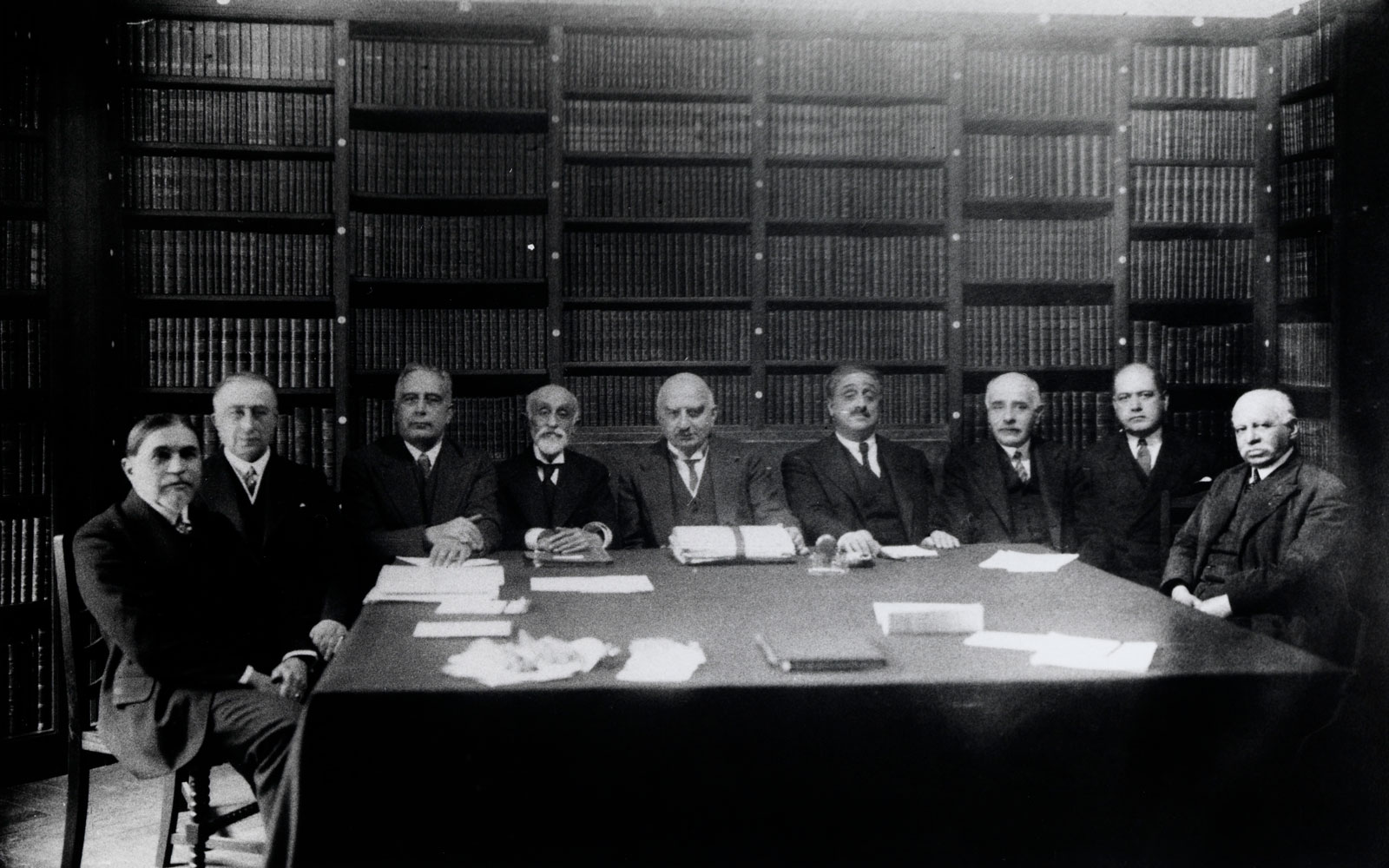
Besides being a discerning collector, Calouste Gulbenkian was a generous philanthropist. In keeping with family tradition he supported a larger number of Armenian charities, including the S. Pirgiç Hospital in Istanbul, where his parents are buried. He left the majority of his collection of Armenian art to the Armenian museum in Jerusalem. His philanthropy was by no means limited to the Armenian community however. Throughout his long life Gulbenkian made regular donations to a panoply of other good causes, avoiding public recognition wherever possible.
Last years in Lisbon
During World War II Gulbenkian initially stayed in France but decided in April 1942 to seek refuge in a neutral country. The choice lay between Switzerland and Portugal.
Gulbenkian settled on Portugal because of its geographical situation: if necessary he could escape by sea to the United States. He remained until his death; perhaps because of the stable society, the low taxes, and the absence of a prying media. In Lisbon he felt welcome – he wrote later “that he had never felt anywhere else” such hospitality as in Lisbon, a quiet city in a Europe devastated by war.
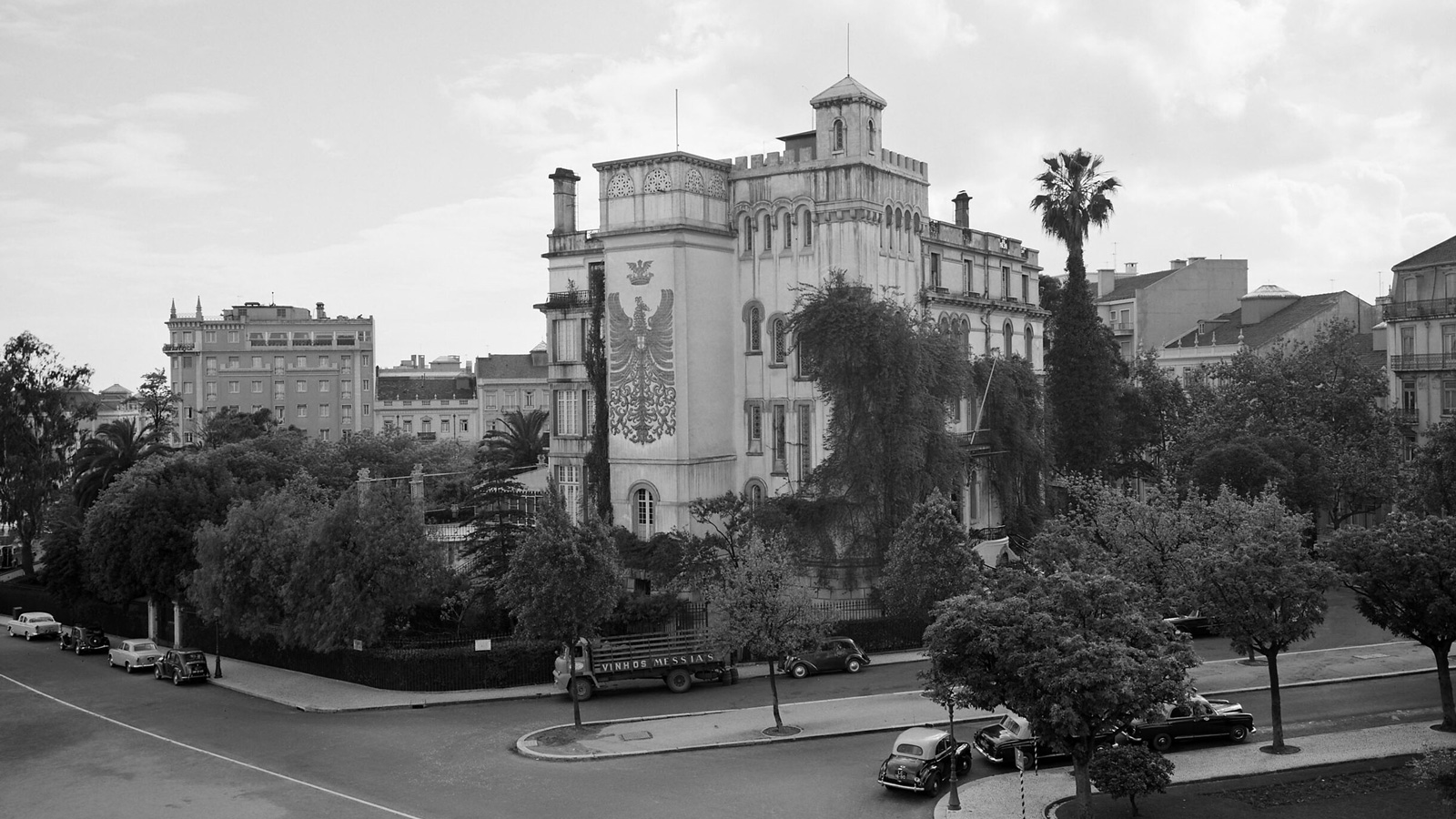
He lived at the Hotel Aviz, Lisbon, for thirteen years and died in Lisbon on 20 July 1955, aged 86. His will (18 June 1953) left generous legacies to his children and established lifetime pensions for other relatives and retainers. He created an international foundation that would bear his name, inherit the rest of his fortune, and be presided over by his trusted lawyer, Lord Radcliffe. To him he entrusted the mission to act so as to benefit “humanity”. He also wanted his Foundation to reflect what he considered his major achievements: his art collection and his role as a “business architect”, conceiving structures to bring together and unite different nations, groups and interests.
After his death, arduous negotiations with the French and Portuguese governments ensued, to establish the terms under which Gulbenkian’s art collection would be allowed to leave France, as well as the legal basis for the foundation. In 1960, the entire collection was brought to Portugal, where it was exhibited at the Pombal Palace in Oeiras from 1965 to 1969.
14 YEARS AFTER HIS DEATH, HIS WISH WAS FULFILLED, WHEN THE CALOUSTE GULBENKIAN MUSEUM OPENED IN LISBON.
However differences of opinion concerning the weight of the international activities to be carried out by the Foundation, the composition of its Board of Trustees (the Government insisted on a majority of Portuguese members), and the fear of government interference led Lord Radcliffe to resign. Thus José Azeredo Perdigão became the first President of the Foundation.
Presently the Foundation – one of the largest foundations in Europe – is trying to act more internationally, partly to tackle the major issues facing society but also to honour the Founder’s wishes. The Foundation is active in collaborating with other Foundations on international issues.
The definitive biography of Calouste Sarkis Gulbenkian was prepared by historian Dr Jonathan Conlin (University of Southampton) and published for the 150th anniversary of Calouste Gulbenkian’s birth in 2019.

